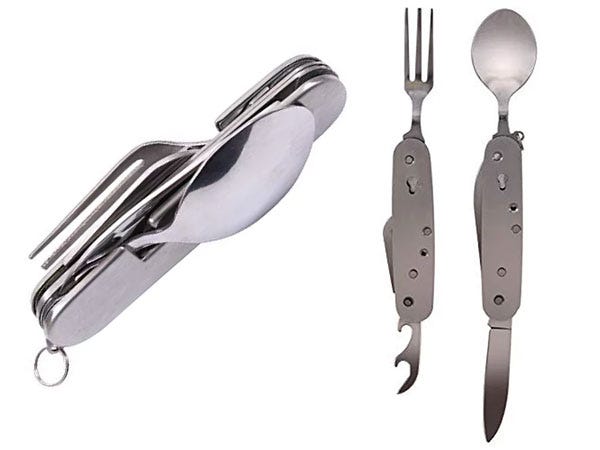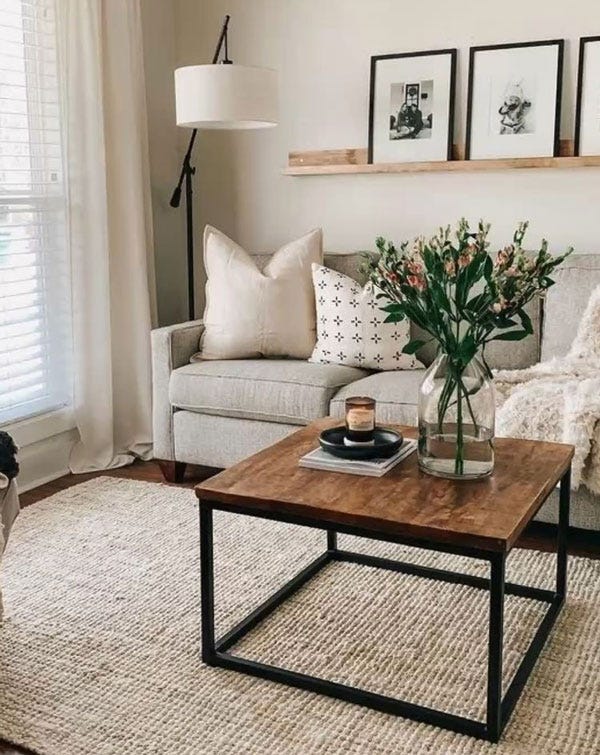Wednesday Walk: Identical Living Rooms
How home improvement TV affects our houses and thoughts on more reusables
Welcome to Willoughby Hills!
If you enjoy what you’re reading, please consider a free subscribtion to receive emails every Wednesday and Sunday plus podcast episodes every two weeks. There are also paid options, which unlock even more features.
As is typical every Wednesday, I’m bring you a smattering of topics that I hope will make you a bit more curious about the world around you and give you something to think about later. I call these Wednesday Walks, as it’s the type of conversation we might have walking down a path in the woods. Shall we take a stroll?
More Thoughts on Reusables
In case you missed it, on Sunday I wrote about the various ways that I’ve seen Walt Disney World approach reusable and compostable dinnerware in their restaurants and what ideas we might take home from the theme parks and resorts.
I was struck by this comment on the article, which was submitted by KS (edited slightly for clarity):
“Radical idea: each person has 1-3 age-appropriate stainless steel bottle and utensils that they use during various eras of their lifetimes. They can be traded, swapped. Steel's durability means each person really only needs one set for many years…. Every hospitality/food/drink venue becomes refillable… Disposable becomes as stigmatized smoking, not wearing seatbelt etc. other prior health hazards & behavioral shifts.”
While I’m not entirely sure if they were suggesting that this be a public policy promoted by the government or something that we banded together as citizens to implement, I was intrigued by the idea and it got me thinking about what it would actually take to make happen.
As I think about it, there are really two hurdles to overcome.
The first is design. For more than a decade, I’ve been the person who prefers to visit a Whole Foods when traveling and pickup a salad, some antipasti, or a few sushi rolls and eat them in my hotel room rather than go out for fast food. For a long time, I traveled with my own cutlery, plus a small container of stainless steel bowls and plates. I carried all of my travel kitchen essentials in a lunchbox which fit in my checked luggage (perhaps this was the precursor to being an RVer!)
The kit that I had was great for eating in a hotel room, but it was not easy to schlep around for lunch on set or dinner in a restaurant. I made it a regular habit to stop into every camping and outdoors store while traveling, looking for a good set of reusable cutlery too, never finding the perfect one.
The closest I got was actually in a Wal-Mart, where they once sold a Leatherman-like multitool that contained a knife, fork, spoon, can opener, and corkscrew that all docked into itself to make for convenient carrying. It was a clever design, but it was still bulky and not something I carried as readily as my Leatherman.

Until there’s a simply designed, small to carry, easy to keep clean while in transit, yet very functional solution to reusable cutlery, it will continue to be a niche item that only the most dedicated environmentalists will bother to use.
The other big challenge to overcome in getting people to adopt more sustainable practices is having the right incentive structure in place to encourage desired behaviors and discourage unwanted ones.
I think looking at the transition away from single use plastic bags is instructive here. In many cases, stores encourage customers to bring reusable bags by offering a nominal reward, 5-10¢ per bag. Does it really make a difference to the customer or the company’s bottom line? Likely not, but there is the perception of earning something free, which helps encourage that behavior.
In some cities and towns, using a single use bag in store incurs a small fee, again usually in the 5-10¢ range. Even though many customers probably don’t notice the addition of this fee onto their bill, the perception of being charged for something causes some people to think twice about if they really need a bag or if they can put a purchase into a purse or backpack or simply carry it out to the car without any protection.
In the case of restaurants, who provides the incentive and/or who charges a fee is still a question. Is this the domain of the government in the form of a tax or is the benefit to the business enough that the restaurant is willing to offer some kind of reward structure?
Logistics also get complicated. It’s easier for a takeout restaurant to ask when ordering how many place settings you’d like (and charge for each one), it’s harder to ask somewhere like Chipotle to police who’s taking how many forks.
At any rate, I was glad to read KS’s comments and they got me thinking further about how the culture around reuse needs to change. I’m encouraged by how attitudes around bags have shifted and feel like water bottles, plastic forks, and disposable packaging are ripe for a similar change.
That Certain Aesthetic

I was very interested to see a recent Washington Post article from Rachel Kurzius come across my feed with the title “HGTV is making our homes boring and us sad, one study says.”
Kurzius cites a study done at the Smith School of Business at Queen’s University in Kingston, Ontario which attempted to show how HGTV and other home improvement media impacted the way that we design our homes. The study only spoke with 17 homeowners, but the results clearly showed a correlation between how we judge the homes of participants on home renovation shows and how we judge our own spaces.
According to Anetta Grant, one of the study’s authors who was quoted in the article:
“‘They’re seeing everything that’s wrong with their home and imagining when people come into their home [that] they’re also criticizing and scrutinizing and judging their home,’ Grant says. ‘It really makes people feel quite uneasy about the decisions that they make in their home, and so they’re always kind of fearful about getting it wrong.’”
With homeowners too focused on the aesthetic judgment of visitors and resale value, the result is every home begins to look remarkably similar.
This article validated some of my own findings from my time producing with Ask This Old House. In that role, I would visit probably 60-70 homes per year in person, plus looked at photos of hundreds more submitted by viewers. When I first started producing, social media was nascent and each home seemed unique and tailored to the occupants. As time went on, I started to notice that people’s homes looked less personal.
To me, the homes began to look more like homes on Instagram and Pinterest than homes in real life. People adorned their walls with vinyl letters with generic phrases like “Live, Laugh, Love." They painted every surface the same shades of whites and grays. The throw pillows, the furniture, it all began to look more visiting a nice Air BnB than being in somebody’s personal space. It was more Home Goods showroom than home.
There’s a fine line to walk here. People have always sought out the latest trends in design and they want their homes to feel contemporary and modern. But at the same time, I think our homes benefit from a bit of funk and personality. I asked Dall-E 2 for the perfect living room, and here’s what it came back with. Funky, right? (and also a bit like a middle aged reboot of Blue’s Clues)
I used to love seeing the random collection of knick knacks that people collected from their life and proudly displayed. In my own home, nearly all of the artwork on our walls is either paintings that my wife made or photographs that we took. They may not be the most trendy photos or look the best in a magazine spread, but they make us happy.
It’s interesting to consider the effect that both traditional media (like HGTV shows and magazines) and newer media like social networks have on how we view trends. It’s not just in our homes, but in fashion, dancing, music, and nearly everything else.
What are your thoughts? Leave a comment below- I love hearing from you!
I publish new issues every Wednesday and Sunday. Sign up to always receive the latest issue and support my work:
Other Wednesday Walks
If you’ve missed past issues of this newsletter, they are available to read here.






I’m intrigued by the idea of stigmatizing the use of single-use items. I’m an avid reusable bag user. My husband is one of those people that will bring home a bunch of bananas in a plastic produce bag inside a plastic grocery bag (drives me crazy), even at the store that gives him five cents off when he forgoes the grocery bag. At the store that charges five cents for that bag, however, he walks out without one. My point, I think most people are incentivized far more when they are charged for something than when they are “rewarded”.